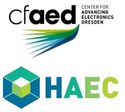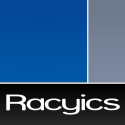6.5 Special Session: Three Years of Low-Power Image Recognition Challenge
Date: Wednesday 21 March 2018
Time: 11:00 - 12:30
Location / Room: Konf. 3
Chair:
Yung-Hsiang Lu, Purdue University, US
Reducing power consumption has been one of the most important goals since the creation of electronic systems. Energy efficiency is increasingly important as battery-powered systems equipped with cameras (such as drones and body cameras) are widely used. It is desirable using the on-board computers to recognize objects in the images captured by these cameras. The Low-Power Image Recognition Challenge (LPIRC) is an annual competition started in 2015. LPIRC considers both energy consumption and the accuracy in detecting and locating objects in images. The special session includes presentations given by the winners of the first three years of LPIRC explaining their winning solutions.
| Time | Label | Presentation Title Authors |
|---|---|---|
| 11:00 | 6.5.1 | THREE YEARS OF LOW-POWER IMAGE RECOGNITION CHALLENGE: INTRODUCTION TO SPECIAL SESSION Speaker: Yung-Hsiang Lu, Purdue University, US Authors: Kent Gauen1, Ryan Dailey1, Yung-Hsiang Lu1, Eunbyung Park2, Wei Liu2, Alexander Berg2 and Yiran Chen3 1Purdue University, US; 2University of North Carolina at Chapel Hill, US; 3Duke University, US Abstract Reducing power consumption has been one of the most important goals since the creation of electronic systems. Energy efficiency is increasingly important as battery-powered systems (such as smartphones, drones, and body cameras) are widely used. It is desirable using the on-board computers to recognize objects in the images captured by these cameras. The Low-Power Image Recognition Challenge (LPIRC) is an annual competition started in 2015. The special session includes presentations given by the winners of the first three years of LPIRC. This paper explains the rules of the competition and the rationale, summarizes the teams' scores, and describes the lessons learned in the first three years. The paper suggests possible improvements of future challenges. Download Paper (PDF; Only available from the DATE venue WiFi) |
| 11:15 | 6.5.2 | REAL-TIME OBJECT DETECTION TOWARDS HIGH POWER EFFICIENCY Speaker: Jincheng Yu, Tsinghua University, CN Authors: Jincheng Yu1, Kaiyuan Guo1, Yiming Hu1, Xuefei Ning1, Jiantao Qiu1, Huizi Mao1, Song Yao2, Tianqi Tang1, Boxun Li1, Yu Wang1 and Huazhong Yang1 1Tsinghua University, Beijing, CN; 2DeePhi Technology, Beijing, CN Abstract In recent years, Convolutional Neural Network (CNN) has been widely applied in computer vision tasks and has achieved significant improvement in image object detection. The CNN methods consume more computation as well as storage, so GPU is introduced for real-time object detection. However, due to the high power consumption of GPU, it is difficult to adopt GPU in mobile applications like automatic driving. The previous work proposes some optimizing techniques to lower the power consumption of object detection on mobile GPU or FPGA. In the first Low-Power Image Recognition Challenge (LPIRC), our system achieved the best result with mAP/Energy on mobile GPU platforms. We further research the acceleration of detection algorithms and implement two more systems for real-time detection on FPGA with higher energy efficiency. In this paper, we will introduce the object detection algorithms and summarize the optimizing techniques in three of our previous energy efficient detection systems on different hardware platforms for object detection. Download Paper (PDF; Only available from the DATE venue WiFi) |
| 11:40 | 6.5.3 | A RETROSPECTIVE EVALUATION OF ENERGY-EFFICIENT OBJECT DETECTION SOLUTIONS ON EMBEDDED DEVICES Speaker: Ying Wang, Chinese Academy of Sciences, CN Authors: Ying Wang, Zhenyu Quan, Yinhe Han, Jiajun Li, Huawei Li and Xiaowei Li, Institute of Computing Technology Chinese Academy of Sciences, Beijing, CN Abstract The field of image and video recognition has been propelled by the rapid development of deep learning in recent years. With its fascinating accuracy and generalization ability, deep CNNs have shown remarkable performance in large-scale and real-life image dataset. However, accommodating computation-intensive CNN-based image detection frameworks on power-constrained devices is considered more challenging than desktop or warehouse computing systems. Instead of emphasizing purely on detection accuracy, Low Power Image Recognition Challenge (LPIRC) is initiated to highlight the energy-efficiency of different image recognition solutions, and it witnesses the advancement of cost-effective image recognition technology in aspects of both algorithmic and architecture innovation. This paper introduces the cost-effective CNN-based object detection solutions that reached an improved tradeoff between energy and accuracy for mobile CPU+GPU SoCs, which is the winner of LPIRC2016, and it also analyzes the implications of both recent hardware and algorithm advancement on such a technique. It is demonstrated in our evaluation that the performance growth of embedded SoCs and CNN models have clearly contributed to a sheer growth of mAP/WH in current CNN-based object detection solutions, and also shifted the balance between accuracy and energy-cost in the contest solution design when we seek to maximize the efficiency score defined by LPIRC through design parameter exploration. Download Paper (PDF; Only available from the DATE venue WiFi) |
| 12:05 | 6.5.4 | JOINT OPTIMIZATION OF SPEED, ACCURACY, AND ENERGY FOR EMBEDDED IMAGE RECOGNITION SYSTEMS Speaker: Soonhoi Ha, Seoul National University, KR Authors: Duseok Kang, Jintaek Kang, Donghyun Kang, Sungjoo Yoo and Soonhoi Ha, Seoul National University, KR Abstract This paper presents the image recognition system that won the first prize in the LPIRC (Low Power Image Recognition Challenge) in 2017. The goal of the challenge is to maximize the ratio between the accuracy and energy consumption within a time limit of 10 minutes for the processing of 20,000 images. Among three conflicting goals of accuracy, speed, and energy consumption, we considered the trade-off between accu- racy and speed first to select Nvidia Jetson TX2 as the hardware platform and Tiny YOLO as the image recognition algorithm. Next, we applied a series of software optimization techniques to improve throughput, such as pipelining, multithreading, Tucker decomposition, and 16-bit quantization. Lastly, we explored the CPU and GPU frequencies to minimize the total energy consumption. As a result, we could achieve an accuracy of 0.24 mAP with energy consumption of 2.08Wh, which corresponds to the score of 0.11931, 2.7 times higher than the winner of LPIRC 2016. Download Paper (PDF; Only available from the DATE venue WiFi) |
| 12:30 | End of session Lunch Break in Großer Saal and Saal 1
On all conference days (Tuesday to Thursday), coffee and tea will be served during the coffee breaks at the below-mentioned times in the exhibition area (Terrace Level of the ICCD). Lunch Breaks (Großer Saal + Saal 1)On all conference days (Tuesday to Thursday), a seated lunch (lunch buffet) will be offered in the rooms "Großer Saal" and "Saal 1" (Saal Level of the ICCD) to fully registered conference delegates only. There will be badge control at the entrance to the lunch break area. Tuesday, March 20, 2018
Wednesday, March 21, 2018
Thursday, March 22, 2018
|











